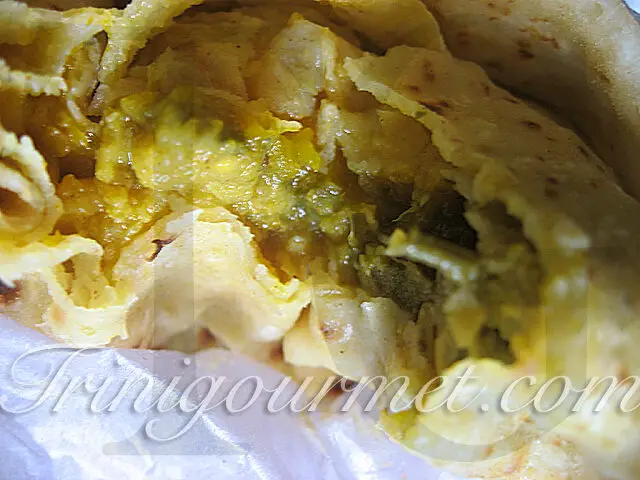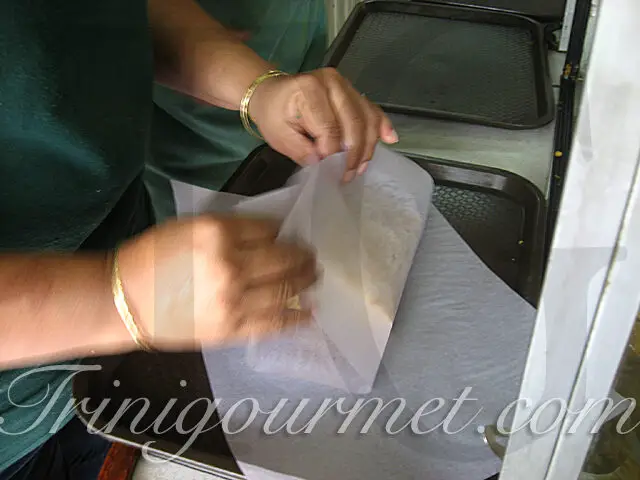Trinidadian Roti – An Overview

This post was originally published December 13, 2006. It has been updated once since then
Roti. Four little letters that have the power to put any Trini into a smile-infused stupor 🙂 Along with pelau I consider it one of Trinidad’s national dishes. East Indian in origin Trinidad roti has now become its own entity with several variants offered to the sidewalk or fast food consumer.
So, what exactly is roti?
Wikipedia to the rescue! Never mind that they spell tawa with a ‘v’??? Then again we spell Divali with a v and I see it everywhere else with a ‘w’ …. lol
Roti… features prominently in the diet of many West Indian countries, especially Trinidad and Tobago, Guyana and Suriname. West Indian roti are primarily made from wheat flour, salt, and water. They are cooked on a tava. Certain rotis are also made with butter. There are several types of roti made in the West Indies:
* Sada Roti: Similar to naan. It is cooked on a tava, therefore the bottom is not crisp like that of a naan. Because it is the easiest one to make, it is the most commonly consumed roti in Trinidad. It is a popular breakfast option in Trinidad, in combination with tomato choka, baigan choka (aubergine/eggplant/melongene), and other vegetable dishes.
* Paratha Roti: A roti made with butter, usually ghee. It is cooked on a tava. Oil is rubbed on both sides, then it is fried. This gives the roti a crisp outside. When it almost finished cooking, the cook begins to beat the roti while it is on the tava, causing it to crumble. It is also called ‘Buss-Up-Shut’ because it resembles a ‘burst up shirt’.
* Dosti Roti: A roti where two layers are rolled out together and cooked on the tava. It is also rubbed with oil while cooking. It is called dosti roti because the word dosti means friendship in Hindi. This type of roti is not made in Guyana.
* Dhalpuri: A roti with a stuffing of ground yellow split peas, cumin (geera), garlic, and pepper. The split peas are boiled until they are al dente and then ground in a mill. The cumin is toasted until black and also ground. The stuffing is pushed into the roti dough, and sealed. When rolled flat, the filling is distributed within the roti. It is cooked on the tava and rubbed with oil for ease of cooking. This is the most popular roti. Another version of this is aloopuri, which is made from potatoes.

Oh dear, just cutting and pasting that has my stomach grumbling! But let me soldier on 😛 Here in Trinidad roti is the ultimate hearty fastfood. In local parlance it doesn’t just refer to the breads listed above though. In essence when you say you’re going to ‘buy roti’ you mean you are going to buy a dish of curried vegetables/meats wrapped up burrito style in one of the above breads (except for buss-up-shot which is served on the side). Roti breads by themselves are referred to as ‘roti skins’. Everyone has their favorite roti shops and is on the lookout for the next ‘rising star’ of roti establishments. I remember when everything ’round town’ (the capital) was ‘Hot Shoppe’, then it was ‘Patraj’ that was the rage. Me I’m most indiscriminate, I love them all 🙂 Growing up I used to see people making roti skins at sidewalk stands, especially in St. James. This does not seem as prevalent these days though. I loved watching it being made!

